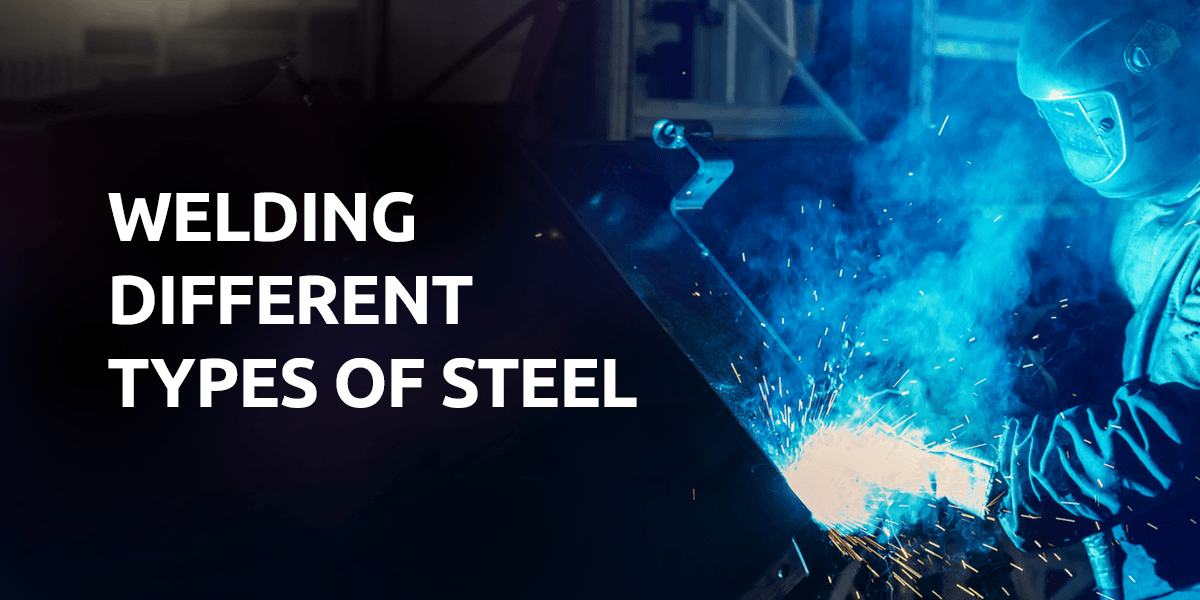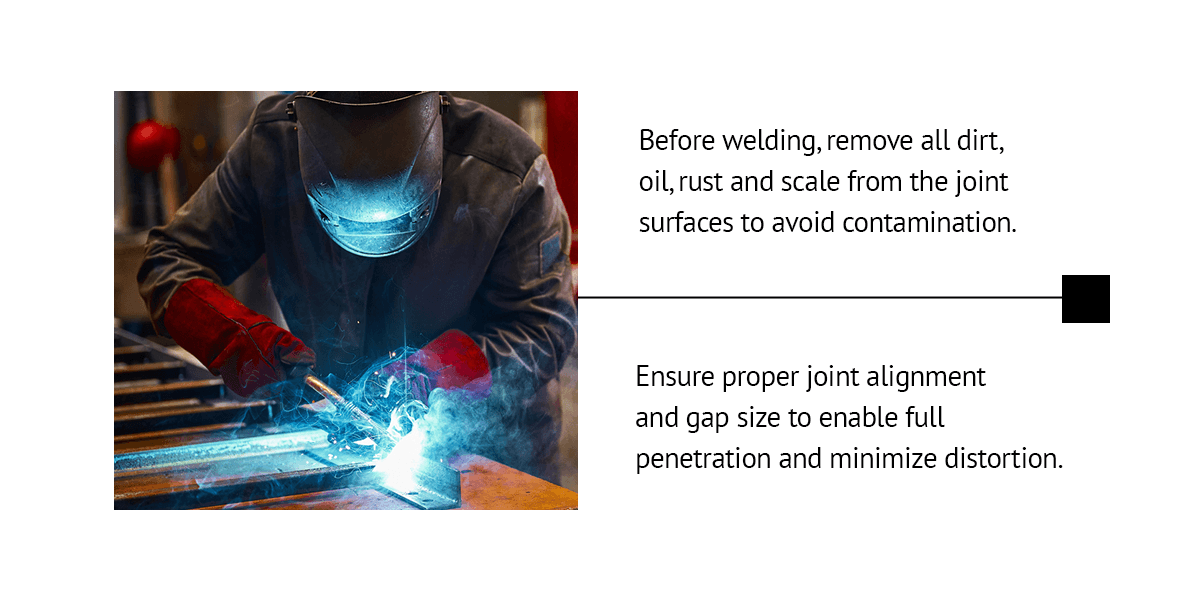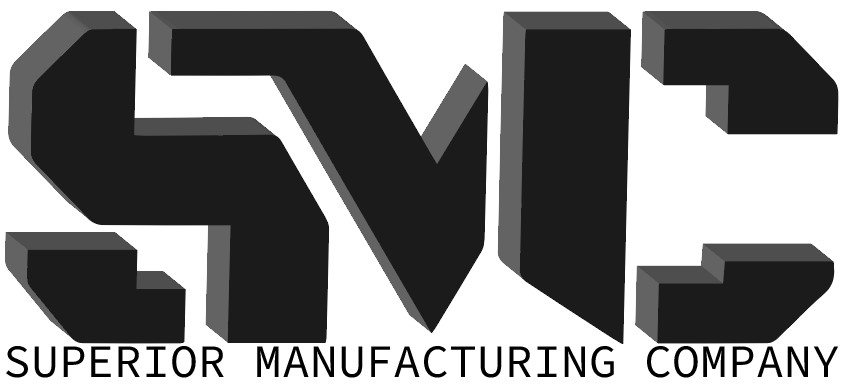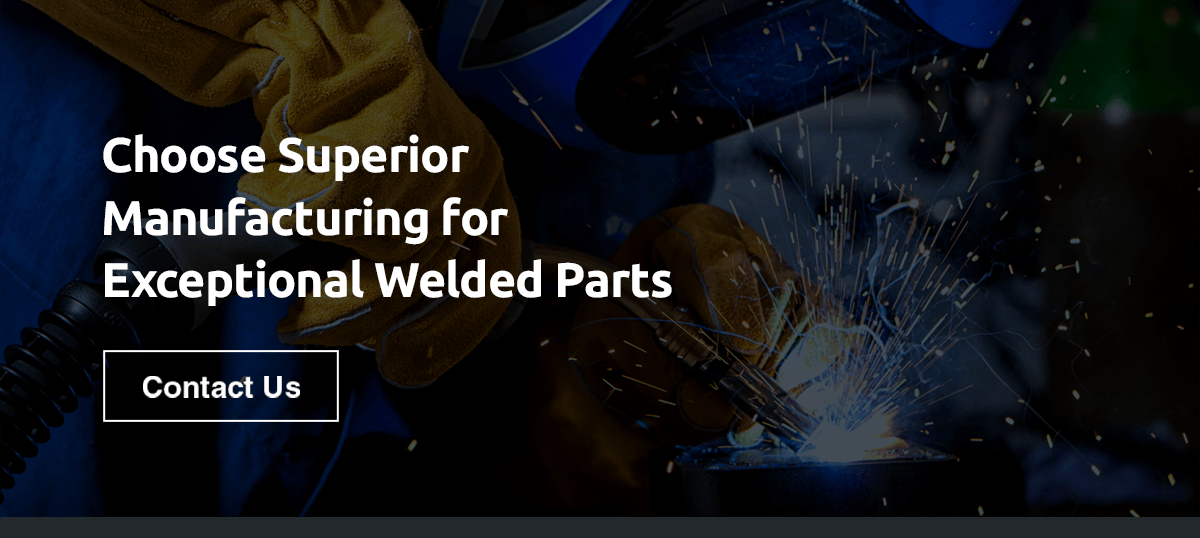
Welding different types of steel is a critical skill for any metal fabricator or industrial manufacturer. Choosing the optimal welding techniques and methods for each steel type and application is essential to producing high-quality, strong and durable welded joints.
This article explores how to weld different types of steel, including the most effective welding process and types to achieve superior welded products.
Steel and Its Alloys
Steel is an alloy consisting predominantly of iron metal with traces of numerous other metals. The combination of materials leads to different grades and types of steel alloys. Each metal has a distinct material strength and melting point. Understanding these characteristics is essential for determining the appropriate welding approach.
- Carbon steel: The most common type of steel is carbon steel. It contains up to 2.1% carbon and small amounts of manganese, silicon, phosphorus, sulfur and copper. Low-carbon steels contain under 0.3% carbon, medium-carbon steels have 0.3 to 0.6% carbon, and high-carbon steels contain 0.6 to 2.1% carbon.
- Alloy steel: Alloy steels contain additional alloying elements like nickel, chromium and molybdenum, which can enhance specific properties such as strength, wear resistance, corrosion resistance or hardness.
- Stainless steel: Stainless steel grades contain a minimum of 10.5% chromium, providing excellent corrosion and heat resistance. They are divided into austenitic, martensitic and ferritic grades.
- Tool steel: This steel is known for its combination of high hardness, wear resistance and durability. It contains carbide-forming elements like tungsten, molybdenum, chromium and vanadium.
Welding Techniques and Methods
Choosing the right welding techniques and methods is critical to achieving high-quality welds in steel fabrication. The most common types of welding for steel include:
Metal Inert Gas (MIG)
MIG, also known as gas metal arc welding (GMAW), is a versatile semi-automatic process that uses a continuous solid wire electrode. It’s fast, efficient and produces minimal slag, making it ideal for welding thinner steel cross-sections and high-volume production. However, it requires shielding gas and doesn’t handle rusty or contaminated metal well.
Tungsten Inert Gas (TIG)
TIG welding, or gas tungsten arc welding (GTAW), uses a non-consumable tungsten electrode to produce the weld. It allows for precise control, making it suitable for welding thin materials, intricate designs and critical applications. TIG provides the highest-quality welds but is slower and more skills-intensive. It also requires shielding gas during the welding process.
Stick Welding
This kind of welding, also known as shield metal arc welding, employs a consumable electrode covered in flux. Its simplicity and affordability make it popular for on-site work and thicker steel sections. Disadvantages of stick welding include slag formation and the need to change rods frequently. Slower speeds are required to achieve higher-quality welds, as the method isn’t as precise as others available.
Can You Weld Different Types of Steel?
You can weld different types of steel, but each one requires specific techniques, filler metals and precautions to ensure optimal results.
Welding Carbon Steel
Carbon steel is generally considered the best welding steel due to its versatility and affordability. Low-carbon steels are the easiest to weld and can be successfully joined using any arc welding process. Higher carbon grades need preheating and post-weld heat treatment to reduce the risk of cracking and maximize the integrity of the heat-affected zone. Filler metals should be matched to the base metal strength and composition.
Welding Alloy Steel
The weldability of alloy steels depends on their chemical composition, with higher alloy content necessitating more advanced techniques. Low-alloy, high-strength steels like A514 provide excellent strength-to-weight ratios but require special low-hydrogen electrodes and strict heat control to prevent hydrogen cracking. When welding dissimilar alloys, the filler metal must be compatible with both base materials to avoid dilution issues and degraded properties.
Welding Stainless Steel
Stainless steel’s corrosion resistance and attractive appearance make it a popular choice across industries, but welding it presents some challenges. Austenitic stainless steels like 304 and 316 are considered the most weldable but are prone to distortion and chromium carbide precipitation (sensitization) in a heat-affected zone.
Using low-heat input processes, 347 or 318 filler metals and proper inert gas shielding helps alleviate these issues. Additionally, surface preparation and cleaning are necessary to achieve a successful weld. Martensitic and ferritic grades are more susceptible to grain growth and cracking, so preheating and controlled weld deposits are necessary.
Welding Tool Steel
Tool steels have a high carbon and alloy content, making them susceptible to cracking and difficult to weld. Essential strategies for successful tool steel welding include preheating — often up to 500 degrees Fahrenheit (260 degrees Celsius) — using low-hydrogen processes, minimizing heat input and slow cooling.
When welding tool steel, filler metals should match the base composition as closely as possible, and multiple pass techniques should be used to temper each layer as necessary for thicker welds.
It’s important to note that post-weld tempering is typically needed to restore the original heat treatment properties when welding all types of steel.

Can You Weld Two Different Metals Together?
Welding dissimilar metals is possible. However, you must carefully consider the physical, chemical and mechanical compatibility of the metals. Select a filler metal that is compatible with both base materials and can handle the differences in thermal expansion and conductivity. For example, 309 stainless steel is often used to join carbon steel with stainless steel. Additionally, joint design, dilution control and post-weld stress relief are essential when welding different metals together.
How to Ensure Weld Quality
Producing high-quality welds in any type of steel requires attention to preparation, technique and inspection. Before welding, remove all dirt, oil, rust and scale from the joint surfaces to avoid contamination. Ensure proper joint alignment and gap size to enable full penetration and minimize distortion.
Use the correct preheating temperature and methods for the specific alloy to minimize residual stresses and hydrogen cracking. When welding, maintain proper travel speed, torch angle and filler deposition rates to achieve the desired bead profile and fusion. For GMAW and GTAW, provide sufficient shielding gas coverage and a proper supply of backing gas (purge gas) to protect the molten weld pool from atmospheric contamination.
Common weld defects include porosity, underfills, incomplete fusion, slag inclusions, undercuts and cracks. Following welding procedures, using high-quality consumables and conducting thorough visual and nondestructive testing are all essential for defect prevention and detection.
To achieve the best welding results, follow these practices:
- Use qualified welding procedures and certified personnel for each material and application.
- Implement strict quality control measures, including pre-weld verification, in-process monitoring and post-weld inspection.
- Regularly maintain and calibrate welding equipment to ensure consistent performance.
- Provide thorough training to welding operators on techniques, safety and defect recognition.
- Seek guidance from steel suppliers and welding experts when venturing into unfamiliar alloys or processes.
Why Trust Us
Superior Manufacturing Company offers over 75 years of industry experience, a deep understanding of different types of metals and alloys, and a commitment to continuous innovation. Our team of certified welding engineers and technicians possesses extensive knowledge of filler metal selection and advanced welding techniques across all steel grades. Additionally, we stay at the forefront of welding technology and best practices by investing in ongoing education and training.
Through our robust quality management system and extensive in-house testing capabilities, we’ve honed our expertise in identifying and preventing welding defects. With our engineering expertise, collaborative approach to problem-solving and wealth of knowledge, we’re a trusted authority on welding different types of steel.
Choose Superior Manufacturing for Exceptional Welded Parts
Welding different types of steel is a complex process that requires expertise in metallurgy, filler metal selection and proper techniques. Superior Manufacturing provides full-service capabilities to deliver the highest-quality welded products. Every aspect of our operation ensures exceptional quality, from our advanced robotic welding systems to our rigorous quality control measures.
Contact us for a free quote and leverage our expertise to create cost-effective manufacturing solutions.


